Clean Beauty, Make Up & Perfume Marketing Trends for Brands in 2024
The search for “clean beauty” and demand for beauty brands to “do better” at protecting our skin and our planet surged in 2020, with an avg. monthly search volume exceeding 12,100 in the US. Whilst the Covid pandemic (2020 – 2022) had us putting wellness and wellbeing at the forefront of our routine and purchases, plus the implode of TikTok taking over “GRWM” (get ready with me) tutorials, we explore what’s trending now in 2024 for beauty brands to take advantage of in their digital marketing strategies.
1. Searches surrounding “clean beauty” are more specific
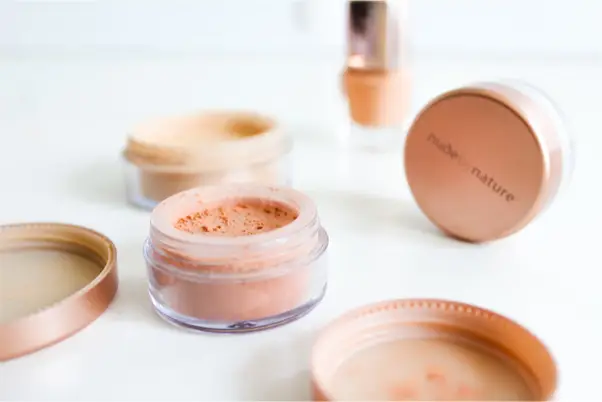
If your strategy has been relying on optimizing your brand and website broadly for ‘clean beauty’ alone, then I’m afraid you’ll be losing traffic and sales as this search term is declining (down to 4.4K US searches in 2024 vs. 12.1K searches in 2021). BUT…the demand for “clean” is still very prevalent, you just need to get more specific. For example:
- “clean make up” demand has risen from 2.4K monthly searches to 12.1K in summer 2024
- “skincare clean” has increased from 2.4K monthly searches to 6.6K in summer 2024
Consider incorporating “clean” into your site navigation as a product category area, with your sub-categories being for the specific product types e.g. “Make up”, and sub-sub-categories/filters refining your product catalogue even further e.g. “Foundation”.
2. Non-toxic please! People are cutting ‘toxicity’ everywhere
Non-toxic appears to be the up-coming search related to ‘clean’ beauty products but as an alternative to the word ‘clean’, defining further that people want less harmful products to their skin and environment.
This comes as no surprise when it has been reported more than 95% of people in the US have PFAs (permanent chemicals) in their blood, with cosmetics being one of the many industries contributing to this percentage as reported by “imaware” and “Fitt Insider”. It doesn’t help the US is falling behind European markets in banning suspicious chemicals from cosmetics, banning only 11 known chemicals compared with Europe’s banning of 1.3K, so consumers are taking matters into their own hands.
With “non-toxic” US search having increased in the past 4 years from 4.8K to 14.6K, it’s no wonder influencers have jumped on this terminology within their product reviews content. Consider diversifying your onsite and social content when promoting your ‘clean’ product ranges, to remain relevant and harvest demand.
3. “Not just a pretty (clean) face”, people want “clean perfume” scents
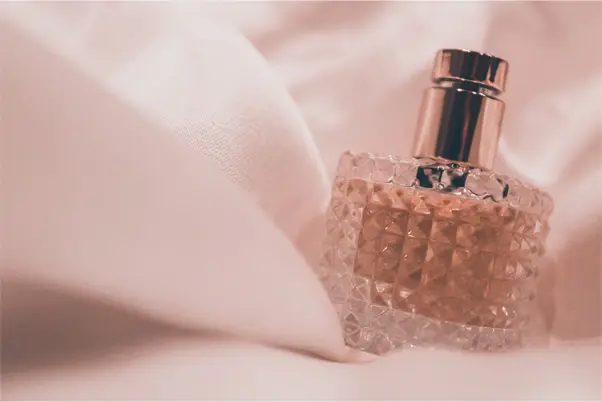
Perfume is dominating the ‘clean’ cosmetics space in terms of demand. It’s not necessarily the first product category you think of when manufacturing and promoting ‘clean’ cosmetics, but the people want it!
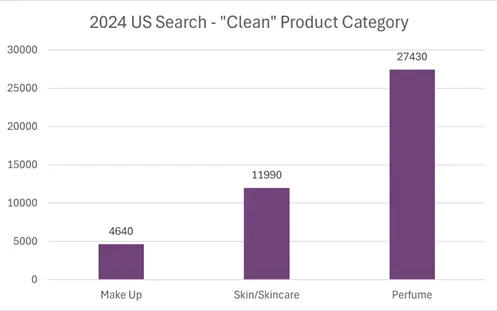
4. Your brand MUST be recognized for “clean”
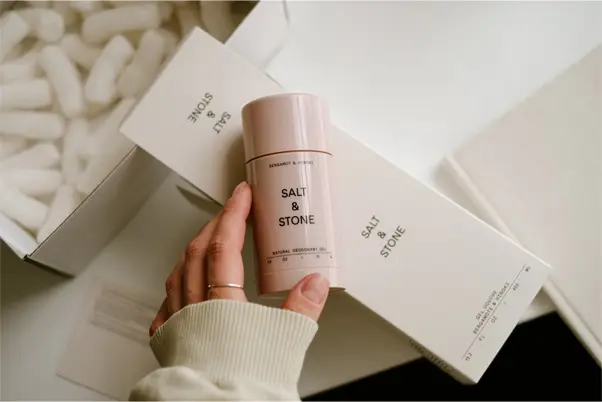
Across the clean beauty category, people are opting to search ‘brand’ first, beginning their research into which beauty brands are legitimately ‘clean’ before narrowing their search by product. Whilst your entire product portfolio may not be clean, it’s important to build brand awareness in the clean beauty space for your product ranges which are. Quite often, retail purchases and research for purchase begin with recognized brands which are front-of-mind.
It's that ‘system 1’ approach and recognition you need to build (even if at a smaller scale to a niche audience) to compete fully in this space. If you don’t have the budget to invest in this via broadcast/ATL paid media channels and PR, then opting for some broader, upper-funnel search terms within your SEO and PPC (e.g. ‘clean makeup brands’ – AMS 6.6K) would be an option, along with some ‘reach’ or ‘video’ bid strategy paid social ads to scale the volume of people your brand can be in front of.
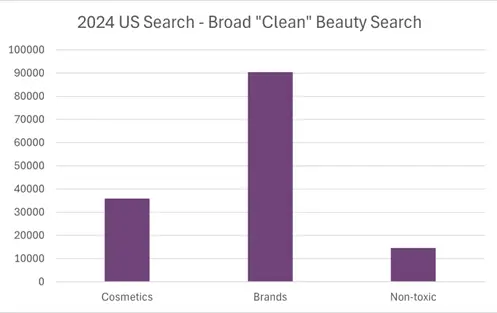
5. “Get un-ready with me” social content
#GRWM (get ready with me) content has received huge popularity across social channels such as Instagram (5M+ hashtags) and TikTok (13.3M+ hashtags) as far as video content goes, but it’s no longer just short-form video content crammed into a 15” asset, as this trend has also made its way across YouTube which accommodates longer viewing habits.
Whilst this began with a focus on #OOTD (outfit of the day) and make up tutorials, getting ‘un-ready’ has become a hugely popular trend across social and is a product discovery opportunity for skincare. Yes, the #GetUnreadyWithMe hashtag is far less popular in terms of discovery volume (130K+ volumes across TikTok) however, content creators are leveraging the original trend’s search volume by suggesting you “#GRWM For Bed” etc…
You should consider this content in your influencer/UGC content strategies, even utilize it yourself if you’re the face of your brand e.g. Charlotte Tilbury, or Marcia Kilgore for Beauty Pie. You can also test injecting it into your paid social ads activity as native content is really working well in this space.
6. Product reviews & comparisons

Many consumers looking to try new products/begin their skincare and beauty regime, are seeking affirmation from peers and reputable press within the SERPs, to advise them as to what is ‘best in class’ across their category of interest. For example: “best clean make up remover” has an avg. search volume of 9.9K per month in the US alone.
You can take advantage of this search interest across your social and onsite content strategies by either a) comparing the most similar competitor products to yours on the market and explaining the difference between the ingredients/finish of the products or b) comparing similar products in your own range, advising what’s best for specific skin types and/or desired look e.g. matte vs. dewy or acne prone skin vs. dry skin etc…
Additionally, building up shopper reviews across your commerce platforms, be this via a 3rd party review site, Google, Meta, Amazon or more, will contribute to providing reassurance ahead of purchase and can be featured within ads and SERPs to make your search listings/ads standout further.
7. The 3 P’s still apply, with product placement being #1

Product accessibility as we all know, is imperative to driving and maintaining sales and market share. You need to be readily available to purchase, where and how your target customers wish to make their purchase. Bricks and mortar stores are still king for all consumers (despite incorrect stereotypical assumptions that the younger generations only buy online, and older generations shop less online) and online shopping has become more ‘social’:
- “Per NielsenIQ data, 36% of Gen Z shops beauty in store only, compared to 28% of millennials (particularly in the United States).”
- “TikTok Shop, is now the number 12 beauty and wellness e-commerce retailer in the U.S. market, making it bigger than several department store e-tailers; in the U.K. market, it ranks number four and, in China (where the platform is known as Douyin), number two.”
Source: NielsenIQ & Global Cosmetics Industry
8. Youth friendly product ranges are an opportunity

With social video entertainment being the preference for many young children and teens as their choice of media consumption, skincare knowledge and purchases have risen for the pre-teen age groups. However, there’s been challenges from Dermatologists to beauty brands advising more awareness needs to be created around product suitability for your age.
Too many young consumers have been ruining their skin by purchasing products containing retinol and injecting this into their everyday skin routine due to its popularity. Brands such as Drunk Elephant have been called out on this. Gone are the days of makeup wipes or even baby wipes being the skincare routine of my youthful days (if you were spoilt, maybe you had a cheap cleanser and toner), my 12-year-old niece has a larger skincare range and regime than I even do now into my late thirties.
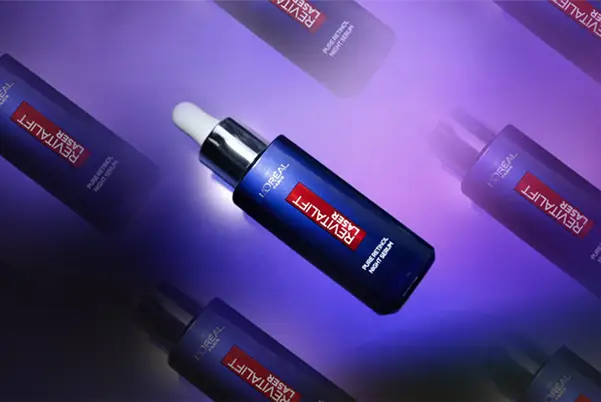
There’s a huge retail opportunity here to cater to full skincare ranges and routines built specifically for pre-teens and young teens to take advantage of, and I don’t just mean the basics/acne suffering products alone, this generation is screaming for more and willing to spend their pocket money investing in protecting the largest organ on their bodies now, not later.
Many school children have also jumped on the #GRWM trends before attending school, so incorporating your products into this content across the right age group, and demonstrating you care about the health and protection of skin at all ages, is super important and relevant today.
9. “Clean” isn’t just about ingredients, it’s a “look”
We saw Regina George’s crying mascara look take off in cinema in the musical re-make of ‘Mean Girls’ and whilst this was merely for entertainment, the film perfectly demonstrated the influence celebrities, our peers and social media has on how we choose to style and portray ourselves.
The “clean girl makeup” look has remained an active search interest since trending across social platforms, with people seeking tutorials on how to achieve that ‘non-effort’, fresh faced look (which does in-fact, require effort).
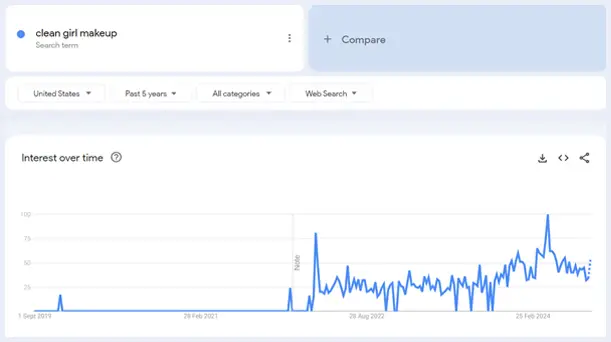
It also sparks spin-off trends such as “clean girl nails”. This is a prime example of trends resurfacing too…don’t ever think a social media trend is only a one-time thing, they do in-fact come back around.
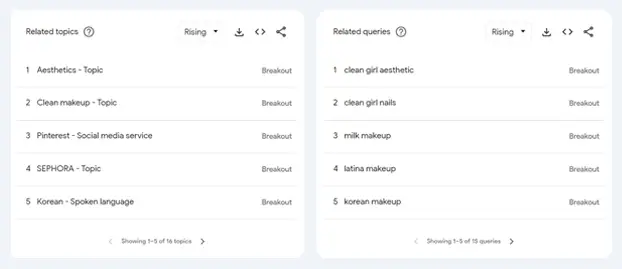
We’ve spoken about incorporating trends such as these into your social strategy, ads and tutorial content, but you should also consider incorporating ‘trend-led’ terminology where relevant into your product titles/descriptions. This is often opportune space which is neglected from being considered for additional marketing tactics, but I’ll bet you’ll have noticed the POS growing in retail #TikTokMadeMeBuyIt anyone?!
10. Think you can fool people with scientific ingredients most of us can’t pronounce? Think again!
“Think dirty” & similar apps check your ingredients.
Whilst beauty is an industry accessible to all, the science which goes into producing our beloved products can read like a foreign language to most of us, making it hard to determine if the products in the ingredients list are indeed, ‘clean’. And this, for many years or for less conscientious brands, may have been what the cosmetics and beauty industry has relied upon, preying on naivety. BUT…there’s an app for that! More than one in fact.
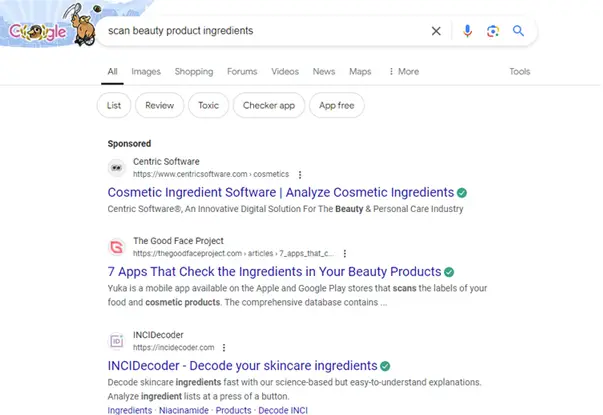
People are utilizing apps with AI technology, to essentially read their beauty product ingredients and advise on an overall rating regarding how ‘clean’ the product scanned actually is. If your products pass the test, you can leverage this within your comms strategies and even look at exploring partnerships with said apps to amplify your products further.
Clean beauty. You can’t fake it, you need to be ready for it, and you must talk about it.
Essentially, aside from the specific trends listed above, these are the 3 broad take aways from this blog. Doing better for the environment and ourselves is not a trend which is disappearing in any business category, and our customers are holding us more and more accountable to make change happen and do better!
Clean doesn’t have to be your entire brand, it doesn’t have to be your only personality, but it does need to exist for your beauty brand to continue to succeed.
Hopefully you found these tips and trends useful, we certainly leverage them within our beauty marketing expertise when developing our digital marketing strategies, especially across PPC, SEO and social media advertising campaigns.

